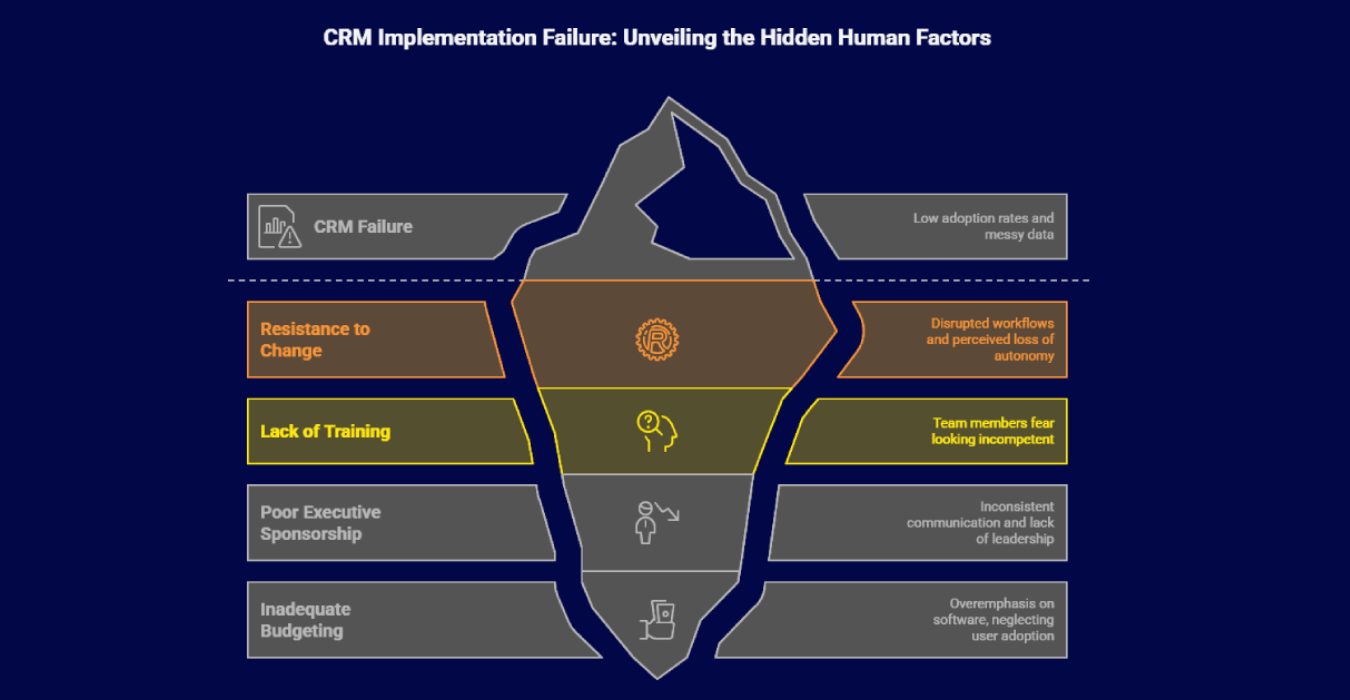The Human Factor: Why Your CRM is Failing

Months after your big CRM investment, adoption is low, data is messy, and your team is reverting to spreadsheets. The problem isn’t the technology. Implementing a CRM is not an IT project; it’s a change management initiative. It’s about people, not just platforms.
The Anatomy of Resistance
⚠️ Disrupted Rhythms
A new CRM fundamentally alters established workflows. Without a compelling “why,” this disruption feels like a burden, not a benefit.
⚠️ Perceived Loss of Autonomy
A centralized system can feel like “Big Brother,” a tool for micromanagement rather than empowerment, leading to avoidance.
⚠️ The Competence Gap
Fear of looking incompetent or falling behind while learning a new system leads users to revert to old, comfortable tools.
The Blueprint for Success
✅ Linchpin #1: Executive Sponsorship is Non-Negotiable
Success requires more than budget approval. It demands a visible, vocal, and unwavering executive sponsor who acts as the project’s chief evangelist—articulating the “why,” leading by example, and holding the line when challenges arise.
✅ Linchpin #2: Budget for People, Not Just the Platform
A “human-first” budget dedicates significant resources to the elements that drive adoption:
- Tailored, Continuous Training: Role-specific guidance showing how the CRM makes each job easier.
- Dedicated Adoption Support: “Floor walkers” or super-users who provide immediate, peer-to-peer help.
- Strategic Communication: A plan to celebrate wins, share success stories, and maintain momentum.
- Active Feedback Loops: Channels for users to provide feedback so the system can evolve with their needs.
From Installation to Cultural Integration
A CRM platform is a tool. Its value is only unlocked when it is woven into the fabric of your organization. At Xccelerance, we partner with you to build a roadmap for adoption and champion the change. Stop thinking of it as an installation. Start thinking of it as a transformation. The human factor will make all the difference.


